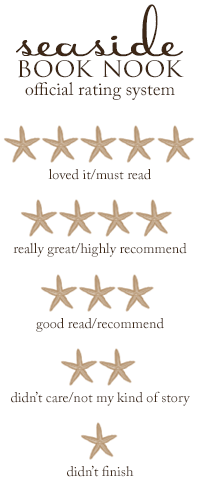College students facing their first illness, accident, or anxiety away from home often flip-flop between wanting to handle it themselves and wishing their parents could swoop in and fix everything. Advice from peers and “Dr. Google” can be questionable.The Ultimate College Student Health Handbook provides accurate, trustworthy, evidence-based medical information (served with a dose of humor) to reduce anxiety and stress and help set appropriate expectations for more than fifty common issues.
What if you can’t sleep well (or can’t sleep at all) in your dorm room? What if a pill “gets stuck” in your throat? What if your roommate falls asleep (or passes out) wearing contacts, and wakes up with one painfully stuck? Your friend’s terrible sore throat isn’t Strep or Mono? What else could it be? What if everyone from your group project thinks they’re coming down with the flu the day before your presentation?
Dr. Jill Grimes has the answer to these questions and many more. Her guidebook is designed to help you:
- Decide if and when to seek medical help
- Know what to expect when you get there
- Plan for the worst-case scenario if you don’t seek help
- Learn how you can prevent this in the future
- Realize what you can do right now, before you see a doctor
- Understand the diagnostic and treatment options
The topics of tattoos, smoking, vaping, pot, piercings, and prescription drugs will also be tackled throughout the pages of this handbook, ensuring you, your roommates, and your friends have a healthy semester.
It is that time of year for parents and college bound kids to start thinking about August and going off to college. It will be here before we know it. Of course, this year will probably be so different and no one knows what the new normal will be or for how long. I work for a college, so I know there is a lot anxiety with this transition, but even more so this year. I have a senior graduating this May and will be heading off to play junior hockey. This book has a ton of great information for both of us. It is one of those books that you will pick up to search for the topic as needed. Keep it place you can access….because you will, especially if it is your first child leaving the nest.
This book is for college students (or junior hockey players!) and their parents
- Parents: Gain confidence that your student has a trustworthy source to help deal with anxieties, illness & accidents, and know this book holds your go-to answers (and the necessary follow up questions) for those times when your student defaults to sending you a frantic late-night text!
- Students: Learn when and if you need to seek care. College students face unique medical risks such as: living in close quarters with other students, the stress of being away from home, public speaking and/or test anxiety, and possibly new levels of physical intimacy, alcohol usage or drug experimentation.• Parents often make all the doctor appointments and closely manage their children’s health right up until they go to college, which may leave students poorly equipped to navigate the healthcare system on their own and/or unsure of basic health care decisions such as choosing which over-the-counter remedies are appropriate for an illness or injury.My son has been away from home for the past two years playing hockey and I think the 5 Must-Have Items are true no matter where your child is going….college, military, sports organization, etc.
5 Must-Have Items for Your College Freshman
You’re making a list and checking it twice…because especially if this is your FIRST kid heading off to college, you want to be sure you’ve included every critical item.
· Twin XL (Extra Long) Sheets? Check.
· Command Strips in every shape, size and strength? Check.
(Much bigger deal for girls vs. guys, but this is the only way to hang stuff on walls.)
· Dorm Bed Risers? (I highly recommend the ones with extra outlets.) Check.
Chargers, fan, laundry bag, clothes, shoes, coats…the list goes on. And on. And ON. What could possibly be missing? From my perspective as a seasoned move-in mom and a university doctor, here ‘s my list of the top five forgotten items:
1. Small Tool Kit: Hammer, screwdrivers, wrench set, pliers, scissors, tape measure and level. This should be last in, first out, because you’ll often need these immediately to assemble and disassemble dorm room furniture or fix a stuck drawer. Pro tip: Add in a couple garbage bags; trash piles up as soon as you start unpacking.
2. Backup Prescription Glasses: especially for the kid that ALWAYS wears contacts! Why? Because if you get a bad stye or “pinkeye” (viral conjunctivitis), or more commonly, you accidentally fall asleep in your contacts or get something in your eye that scratches your cornea- you CANNOT wear contacts for several days to a week or more. And seeing clearly tends to help grades. If you always wear glasses, the backup pair is for when yours break or disappear. And inevitably, it happens during midterms or finals.
3. Small Lock Box: If you take prescription medications for ADD, this is a must. These stimulant pills sell for $5-10 each (a felony if caught!!) and dorm rooms are rarely private and/or consistently locked. Please remove the temptation for others and keep your meds safe. Lock boxes also work well for pricey jewelry, your passport, and while we’re at it, your backup glasses.
4. Heating Pad: Okay, not critical, but a great way to guarantee your popularity! Seriously, few students have these, but those that do tell me “EVERYONE borrows it” for aching muscles, back spasms and “cramps”. Bonus points: in cold climates they can double as an electric blanket (just don’t fall asleep on top of one, as this can cause burns.)
5. Solid Air Freshener: Plug-ins are rarely allowed in dorms, but you can place a solid or gel freshener in your closet (by your shoes) and tuck another under your bed. Extra-strong odors? Bamboo charcoal bags are a pricey option, but they work incredibly well. Choose a neutral or “fresh” smell, not “flowery” or “citrus” as you don’t know your roommate’s sensitivity to different scents. Bodies, dirty clothes, third-hand smoke and old dorms all get very smelly. Unless you are moving into a brand-new dorm with a neat-freak roommate, these fresheners can be lifesavers. Or at the very least, roommate-savers.
Bottom Line: Add these five items to your list for a smoother move-in and a healthier, safer semester! (If you’re flying, pack the glasses & shop for the rest when you arrive.) Good Luck!
I completely agree with the 5 Must-pack items. I dealt with all of them but #3 my son's first year away….especially the air freshener!
Excerpt:
Chapter 3
I Hit My Head-
Do I Have a Concussion?
What If: I Hit My Head. Do I Have a Concussion?
Medical Name: Mild Traumatic Brain Injury (Mild TBI)
What most likely happened:
Scenario A: Playing intramural “noncontact” sports when a high-speed ball or another player directly hits your head, knocking your body to the ground and possibly knocking you briefly unconscious. Symptoms may begin immediately or a few hours after the injury.
Scenario B: Rental E-Scooter accidents. Same song, different verse— this time with your head hitting the pavement, a car, or a wall rather than a ball or person hitting you.
Scenario C: Party scene, doing shots . . . and that’s all you remember. You wake up with a wicked headache, confusion, and possibly a bump on your head or scrapes and bruises on your hands/arms/legs that suggest you took a fall. This version typically includes backstory as friends text asking if you recovered from your fall or from “blacking out” last night.
What’s going on?
A concussion is often described as a “brain bruise” that occurs from either a physical blow directly to the head or injuries elsewhere that transmit that force to the head, causing a functional—not structural—injury to the brain. The brain circuits are “shaken,” but no bleeding or direct tissue damage occurs. Therefore, CT and MRI scans cannot determine whether you have a concussion. These scans may occasionally be used to look for additional injuries or complications, but they neither confirm nor deny the presence of a concussion, so do not automatically assume you will need one.
Concussions may create numerous temporary neurologic changes, most commonly:
A concussion is often described as a “brain bruise” that occurs from either a physical blow directly to the head or injuries elsewhere that transmit that force to the head, causing a functional—not structural—injury to the brain. The brain circuits are “shaken,” but no bleeding or direct tissue damage occurs. Therefore, CT and MRI scans cannot determine whether you have a concussion. These scans may occasionally be used to look for additional injuries or complications, but they neither confirm nor deny the presence of a concussion, so do not automatically assume you will need one.
Concussions may create numerous temporary neurologic changes, most commonly:
- Headache
- Mood changes (anxiety, depression, irritability)
- Sleep disturbance (too much or too little)
- Nausea and/or vomiting
- Balance issues
- Light and/or noise sensitivity
- Difficulty focusing or “brain fogginess”
Treatment:
The answer is complete brain rest for twenty-four to forty-eight hours, then start low, go slow as you return to activities.
Brain Rest means: no screens, no texting, no reading, no listening to lectures. You need a quiet, darkened room where you can comfort- ably sleep. The sooner and more completely you comply with complete brain rest, the sooner your brain will heal and you can return to activities.
Note that full academic return without worsening symptoms should happen before you start back on exercise, sports, jobs, or clubs.
Basic Concussion Rehab
Each step should be twenty-four hours. Go back a step if symptoms worsen.
- Step 1: Complete cognitive rest for twenty-four to forty-eight hours.
- Step 2: Light routine physical activities (cooking, light house work) and trial of thirty-minute segments of cognitive tasks, such as reading/studying. When you are able to tolerate forty-five minutes of academic effort without worsening symptoms, you may return to class. (No work, no extracurricular, no sports yet.)
- Step 3: Full return to academics without worsening symptoms (headache, nausea, fatigue)
- Step 4: Light, nonimpact aerobic exercise (walking, exercise bike)
- Step 5: Moderate activity (treadmill, elliptical)
- Step 6: Return to work (low- or no-impact jobs) and nonphysical
extracurriculars (meetings, etc.) - Step 7: Sport-specific drills
- Step 8: Sport practice: noncontact
- Step 9: Sport practice with contact
- Step 10: Return to playing sports and full life activities
When to head to your doctor:
As a college student, if you have a head injury significant enough to lose consciousness or have any concussive symptoms, please get checked out. At a minimum, concussion inventory scales will give your doctor a baseline to reassess you if your symptoms persist. Professors are far more understand- ing when they see documentation that a doctor has placed you on short- term “complete brain rest” so you cannot prepare for a test, versus telling them the day of the exam that you couldn’t study the last few days because you think you might have a concussion.
Worst-case scenario:
Concussions, by definition, are temporary neurologic changes, so the good news is that symptoms should resolve. Unfortunately, two “worst-case” sce- narios exist:
• Repeat concussions clearly have a detrimental effect on memory and mood, and research continues to evaluate the impact on cognition and long-term neurodegenerative diseases such as Alzheimer’s and Chronic Traumatic Encephalopathy (CTE). Take- home message: the more concussions, the worse the outcome.
Prevention:
{ Concussion is a clinical diagnosis. Most head injuries do not require a CT scan.
{ No driving until cleared by your physician; your balance and reaction times are affected more than you realize.
Prevention:
- Helmets—if you are riding a bike, motorcycle, or scooter, protect your brain!
- Limit alcohol—if you do drink, choose beer or wine, not shots.
- Think! You know standing on that wobbly chair or stool to hang
posters or strings of lights is risky . . . but it’s too much hassle to get a ladder, so you do it anyway. Or your phone or watch buzzes with a text while you’re biking, scootering, or driving, and you reflexively “must” answer. Don’t do it!!
TIPS:
{ Concussion is a clinical diagnosis. Most head injuries do not require a CT scan.
{ No driving until cleared by your physician; your balance and reaction times are affected more than you realize.
{ Bright lights frequently trigger headaches with concussions, so wear sunglasses if outside or in a brightly lit room.
{ If you have a concussion, avoid ALCOHOL and any mind- altering substance (marijuana); using these substances while your “brain bruise” is healing is like repeatedly hitting a recovering bruise on your arm.
{ If you have a concussion, avoid ALCOHOL and any mind- altering substance (marijuana); using these substances while your “brain bruise” is healing is like repeatedly hitting a recovering bruise on your arm.
Jill Grimes, MD, FAAFP, is a nationally recognized medical media expert, award-winning author, medical editor, and Board-Certified Family Physician. Her passion is prevention, and her message spans print (Parenting Magazine, Glamour, etc.), online (Refinery29, Foxnews.com, etc.), and television and radio talk shows (Sirius XM Doctor Radio). After two decades of private practice, Dr. Grimes now enjoys seeing patients part-time at the University of Texas in Austin. She is a proud mom to two awesome collegiate daughters. Academically, Dr. Grimes enjoys educating healthcare professionals by speaking at national AAFP, Pri-Med®, and Harvard Medical School conferences, and remains on clinical faculty at UMASS Medical School.
Connect with Jill Grimes, MD, FAAFP at https://jillgrimesmd.com
Connect with Jill Grimes, MD, FAAFP at https://jillgrimesmd.com
Twitter: @jillgrimesmd
Instagram: @JillGrimesMD
BUY















No comments:
Post a Comment
Note: Only a member of this blog may post a comment.